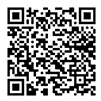Open interest vs volume
Any market research takes time, effort, and patience. As a result, if you engage in a stock market, you can do so with the appropriate amount of analysis and resources at your disposal. Remember, those market investments are subject to a range of risks and uncertainty, which is why any slight hint and signal can be crucial for traders.
Open interest and exchange rate are two of the most often used metrics in stock market research. In futures and options contract trading, they are beneficial for gauging market flow and sentiment. These features are essential technical indicators that traders may use to assess share price fluctuations, direction, and liquidity.
However, calculating the difference between open and volume can be a little confusing, particularly for new traders. Take a look at these key points to understand the differences in these two words better:
Any market research takes time, effort, and patience. As a result, if you engage in a stock market, you can do so with the appropriate amount of analysis and resources at your disposal. Remember, those market investments are subject to a range of risks and uncertainty, which is why any slight hint and signal can be crucial for traders.
Open interest and exchange rate are two of the most often used metrics in stock market research. In futures and options contract trading, they are beneficial for gauging market flow and sentiment. These features are essential technical indicators that traders may use to assess share price fluctuations, direction, and liquidity.
However, calculating the difference between open and volume can be a little confusing, particularly for new traders. Take a look at these key points to understand the differences in these two words better:

Open a Demat Account
Understanding Contracts: Options and Futures
Since open interest and market volume are the most often used terms in futures and options trading, let's look at how they work. Futures and options are two types of legally binding contracts. They allow traders to buy or sell securities such as stocks or commodities at a fixed price on or before a specific date. The valuation of the underlying properties is basically what determines the value of these contracts.
As a result, traders must be informed and mindful of the market change of the underlying assets when selling contracts like futures and options. To control their risks and maximize their profits, they rely heavily on technological research and metrics such as volume and open interest.
What is the concept of volume in trading?
In the context of contract dealing, volume corresponds to the number of contracts exchanged for given security for a given period. The number of transactions for that protection is counted down, including every option and possible offer traded between buyers and sellers.
When a security's futures widely trade, the trading rate for that security rises dramatically. The trading rate of the deposit will be insufficient if it is irregularly trading. The stock exchange keeps track of specific estimates of trade value for individual shares. They revise during the day, and the final regular trading volume number determine at the end of the trading day.
What Is the Importance of Volume in Trading?
To understand the difference between open interest and volume, consider why the latter is essential in contract trading. Trading volume is a measure of a security's trading interest and represents its liquidity in the market. High trading volumes indicate to traders that there is active interest in the protection in the industry and potential for improved order execution.
The most accurate way to use this metric is to concentrate on a security's average daily trade volume figures. For example, if a security's average trading volume is higher than usual and followed by a price adjustment, it could indicate a favorable opportunity. As a result, a trading volume may verify the significance of specific price fluctuations and directions.
What is the concept of open interest in trading?
Next, we'll look at how to tell the difference between open interest and trading volume by looking at the former. The amount of active or outstanding future and options contracts on an asset at any given time is known as open interest. It represents available places in the market for a security that has not yet been locked for any reason.
Open interest is a measure of trading activity for a particular commodity, indicating whether money flows into the futures and options markets. Open interest is updated less regularly than the trading rate, only once a day.
What Is the Importance of Open Interest in Trading?
As new contracts form, open interest rises, and when positions in an existing agreement are closed by the buyer and seller, open interest falls. As a result, it's used as a gauge of a security's liquidity and trading interest. Open interest that is high or rising means that a significant number of buyers and sellers are interested in that protection. Since there is an abundance of capital circulating in the economy, dealing with security would be better and faster.
Low or declining open interest in a security, on the other hand, means that market players are not taking any new positions and are closing out any existing ones. As a result, the demand for that protection is drying up, making it unsuitable for trading.
Conclusion:
For contract traders, both market frequency and open interest are essential considerations that can affect their decision-making process. When it comes to the open interest vs. trade volume distinction, both are important in their own right. They are also essential components of any trader's toolkit since they aid in identifying openings and possible entry and exit points in the market.
Recent Posts
